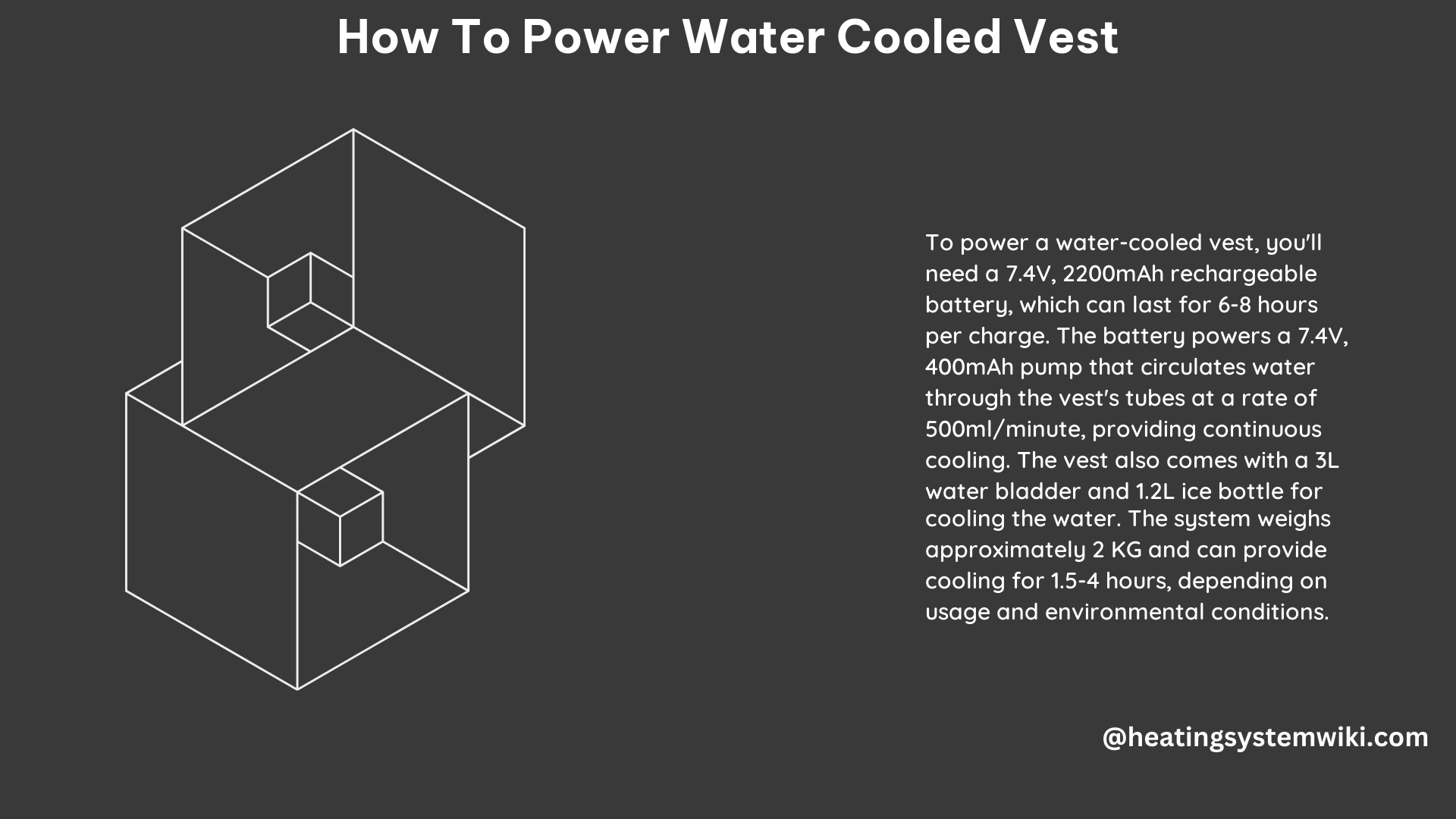To power a water-cooled vest, you typically need a rechargeable battery system that can supply the necessary voltage and current to drive the water pump. The pump is responsible for circulating the cool water through the tubes sewn into the vest, providing continuous cooling to the body core.
Understanding the Power Requirements
When considering a water-cooled vest, the key factors to consider are the voltage and current requirements of the water pump, the battery capacity, and the expected runtime of the system.
Water Pump Specifications
- Voltage rating: Typically 12V DC
- Current draw: Approximately 0.2-0.3A
- Flow rate: 500ml/minute or 1.05 PT/minute
Battery Pack Considerations
- Voltage: Matching the pump’s voltage rating (12V)
- Capacity: Sufficient to power the pump for the desired runtime
- Battery type: Rechargeable, such as Li-ion or LiPo
Powering a Commercial Water-Cooled Vest

The Personal Microclimate Body Cooling Vest with a backpack Fixed Water Bladder system uses the following power specifications:
| Specification | Value |
|---|---|
| Pump Voltage | 7.4V |
| Pump Flow Rate | 500ml/minute |
| Battery Voltage | 7.4V |
| Battery Capacity | 2200mAh |
| Runtime | 6-8 hours per charge |
| System Weight | Approximately 2 KG or 4.4 lb |
This system provides a good example of the power requirements for a commercial water-cooled vest.
Building a DIY Water-Cooled Vest
If you’re considering a DIY approach, you’ll need to source the following components:
- Water Pump
- Voltage rating: 12V DC
- Current draw: Approximately 0.2-0.3A
-
Flow rate: 500ml/minute or higher
-
Battery Pack
- Voltage: 12V DC
- Capacity: Sufficient to power the pump for the desired runtime
-
Battery type: Rechargeable, such as Li-ion or LiPo
-
Tubing and Connectors
- Flexible, food-grade tubing to circulate the water
- Appropriate connectors to attach the tubing to the pump and vest
The estimated cost for a DIY water-cooled vest project is around $150 or less, as suggested in a Reddit post. However, the physical labor required to build such a system might make purchasing a ready-made vest more practical.
Calculating the Runtime
To calculate the expected runtime of your DIY water-cooled vest, you’ll need to consider the battery capacity and the power consumption of the water pump.
For example, if you’re using a 12V, 2200mAh battery pack and a 12V, 0.3A water pump, the runtime can be calculated as follows:
Runtime = Battery Capacity / Power Consumption
Runtime = 2200mAh / (12V x 0.3A)
Runtime = 2200mAh / 3.6W
Runtime = 611 minutes or approximately 10 hours
This calculation assumes a constant power consumption and a fully charged battery. In practice, the runtime may be slightly shorter due to factors such as battery discharge characteristics and pump efficiency.
Conclusion
Powering a water-cooled vest requires a rechargeable battery system that can provide the necessary voltage and current to drive the water pump. By understanding the power requirements of the pump, selecting an appropriate battery pack, and considering the runtime, you can effectively power a water-cooled vest for your needs, whether it’s a commercial product or a DIY project.
References
- Personal Microclimate Body Cooling Vest with backpack Fixed Water Bladder: https://www.batteryheatedclothing.com/cooling-vests/personal-microclimate-body-cooling-vest-with-backpack-fixed-water-bladder/
- Ice Cool Vests Review on YouTube: https://www.youtube.com/watch?v=S-ME4uR-dj0
- DIY Active Cooling Vest Discussion on Reddit: https://www.reddit.com/r/MultipleSclerosis/comments/23luxy/cooling_vest_diy_active_cooling/
